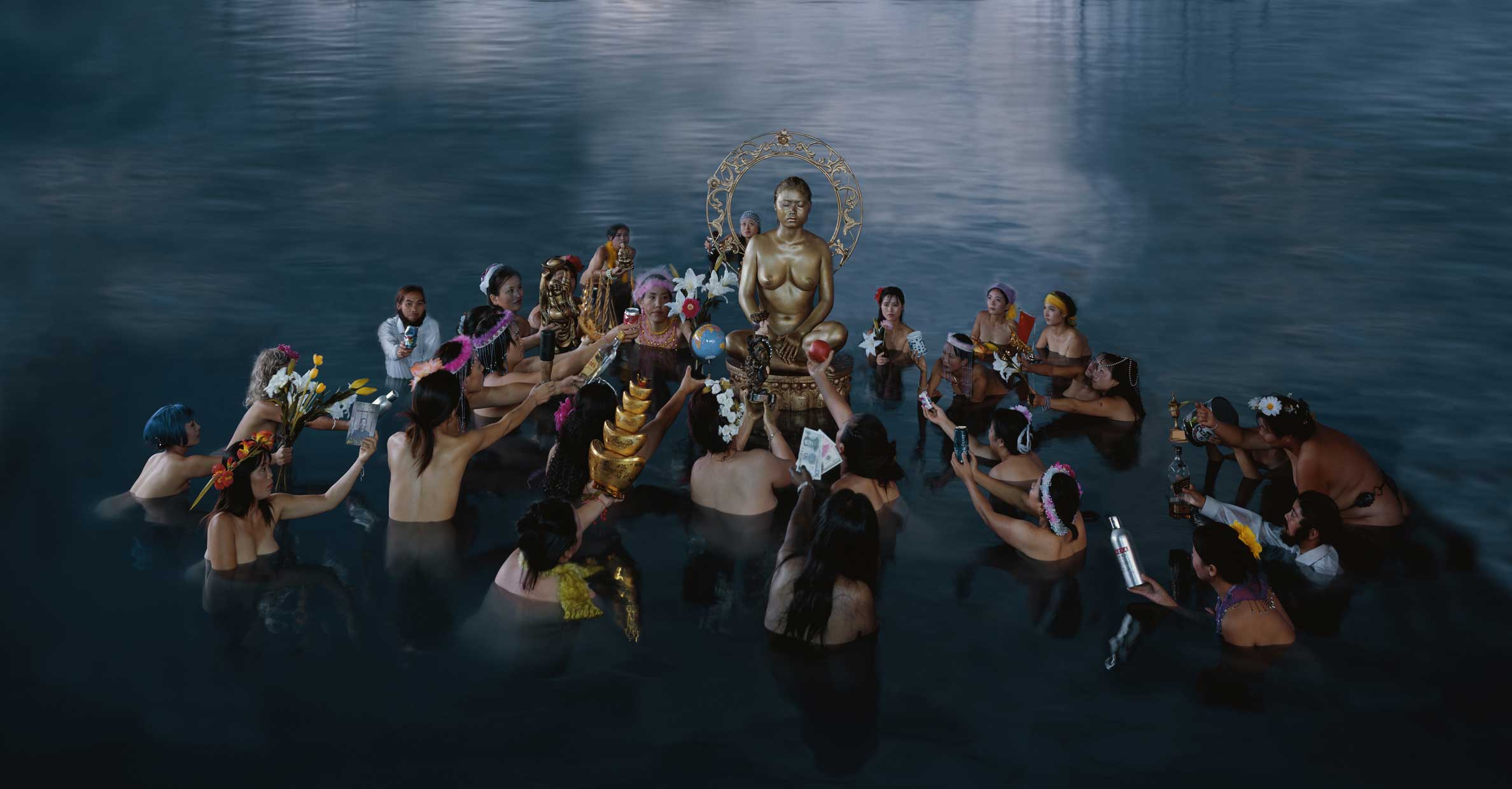To Qingsong and his contemporary Chinese artists, globalisation is not theoretical. It is a dystopian reality demanding to be recognised
Wang Qingsong considers himself as both a journalist and artist, documenting China’s dramatic, ever-changing social landscape with a critical eye. Dealing with the impacts of Western modernisation, he often blends the visual vocabulary of Western advertising and propaganda images of the Chinese Communist regime with European Old Master paintings. Growing up, Qingsong was exposed to China’s confrontation with the Soviet Union, Chongqing’s itinerant peasant workers, and the huge urbanisation strive during 1993 in Beijing. These decisive changes have transformed China into what Qingsong believes is a ‘huge playground or construction site’. Referencing the country’s suffocating social contradictions and pollution, the artist chooses to critique the incompatibility of Western culture with his homeland, presenting what he describes as the ‘unchanging, tragic situations of humanity’.
In Offering (2003), a group of nude men and women are depicted surrounding a golden cross-legged buddha in a body of water. The participants float toward the human statue, their arms outstretched offering tokens of the Western capitalist world. Objects proffered by the swimmers include an apple, a can of coke, a small globe, and a cluster of banknotes. Garlands adorn the heads of the group, forming their own quasi-haloes. Colours are rendered with a heightened vibrancy, particularly bright reds, oranges, and golds. The group appear gaudy and unrefined, as if imitating a sacred ritual, only to slightly miss the mark. Ultimately, the ritual act of gift-giving is portrayed as futile. The Buddha, being a human doused in gold paint, possesses no divine qualities. She will not accept the swimmers’ gifts, as they are largely not gifts. The objects the group present with such admiration are merely debris from Western life. Objects we acquire only to purge weeks later, or exchange for more meaningless bric-a-brac. Here, Qingsong suggests that the mixing of Western and Chinese culture is a defilement, a blatant betrayal of consumer culture and false advertising.
Today, China has liberalised its approach to censorship. However, Qingsong explains that while he was growing up all the photographs in the newspapers were ‘fake, or inspired by a false reality.’. Qingsong adapts his own practice to mimic the way past journalists reported the truth, aiming to create his own unique style of reportage which is ‘more interesting, more humorous and more critical.’ To Qingsong and his contemporary Chinese artists, globalisation is not theoretical. It is a dystopian reality demanding to be recognised. By approaching these issues head on, the artist introduces the west to the rich complexities of Chinese art traditions, while simultaneously holding up a mirror to our own harmful obsessions
(By Eleanor Lerman)
